#Visual Studies Workshop/Getty Images
Text
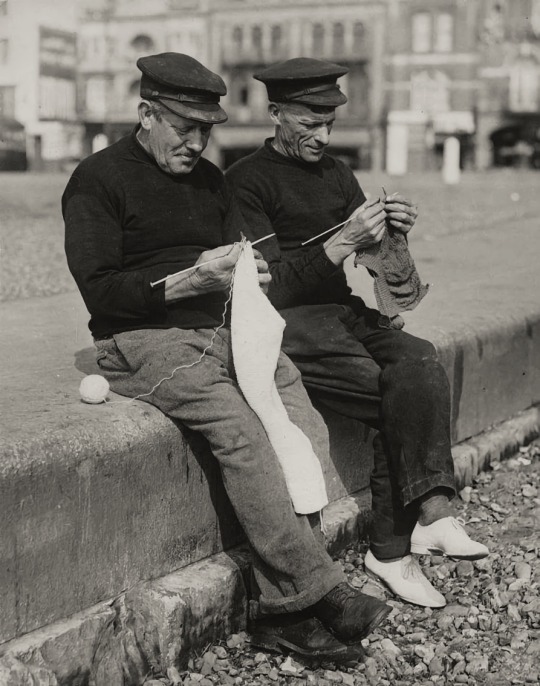
Two fishermen knit their winter woolies in Ramsgate, Kent, England, 1940s - Visual Studies Workshop/Getty Images
431 notes
·
View notes
Photo
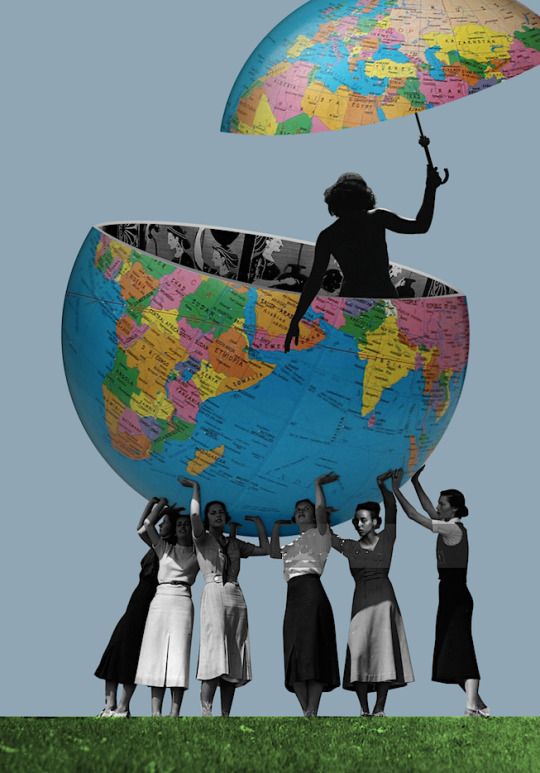
eucanthos
_
University of Southern California students holding huge globe, Foreign Trade Week preparations, early to mid 20th c., LA, California. Photo by Visual Studies Workshop/Getty Images
Fayruz Abdiamn Sutherland Models [head, 2nd from R]
Attic black-figure hydria from ca. 520 BC depicts women filling their hydriai with water collected at a fountain house. Museum of Fine Arts, Boston [inner globe]
Andre de Dienes nude w umbrella
https://www.gettyimages.com/detail/news-photo/girls-at-the-university-of-southern-california-holding-up-a-news-photo/566220181
https://moptopmaven.blogspot.com/2010/01/not-so-twa.html
https://www.joshobrouwers.com/articles/ancient-greek-hydria-form-function/
#eucanthos#collage#women#Earth#hope#activism#umbrella#Caryatid#Andre de Dienes#Fayruz Abdiamn#female#tribute
14 notes
·
View notes
Text
Archaeologists Are Just Beginning to Unearth the Mummies and Secrets of Saqqara
https://sciencespies.com/history/archaeologists-are-just-beginning-to-unearth-the-mummies-and-secrets-of-saqqara/
Archaeologists Are Just Beginning to Unearth the Mummies and Secrets of Saqqara

A giant trove of ancient coffins and mummies has been discovered at the vast Egyptian burial site of Saqqara. After hinting at a big announcement for days, the Egyptian antiquities ministry revealed the details this morning: more than 100 intact wooden coffins with brightly painted scenes and hieroglyphs, and well-preserved mummies inside.
The announcement comes after a string of recent discoveries at Saqqara, including 59 intact coffins revealed in September and October. The newly announced coffins were found nearby, at the bottom of three 12-meter shafts revealed when archaeologists led by Mostafa Waziry, head of Egypt’s Supreme Council of Antiquities, were removing debris from the site. Other finds include funerary masks and more then 40 statues of the funerary deity Ptah-Sokar, all untouched for at least 2,000 years.
Speaking at a press conference at Saqqara with dozens of the coffins displayed on stage behind him, Egypt’s antiquities minister, Khaled el-Enany, praised the Egyptian archaeologists who excavated the finds, which mostly date from between the sixth and first centuries B.C. “They have been working day and night and I’m very proud of the result,” he said. Their story will be told in a Smithsonian Channel docuseries called Tomb Hunters, scheduled to air in 2021.
An incredible trove of archaeological artifacts has been unearthed once again at Saqqara – including 100 coffins, and incredibly rare statues dating back 4,500 years.
As the coronavirus pandemic devastates the tourism industry on which Egypt depends, the recent finds have been publicized in a series of increasingly dramatic events. At a previous press conference in October, Egyptian officials opened a coffin live on stage. This time they went one step further, not just opening a coffin but X-raying the mummy inside, revealing the individual to have been an adult male, perhaps in his 40s, whose brain was removed through his nose as part of the embalming process.
Egyptologists have welcomed the announcement. To find an unplundered necropolis from this period is “extremely significant”, says Salima Ikram, an archaeologist based at the American University in Cairo, who works at Saqqara. They note that although the latest find is larger, it doesn’t differ significantly from the previously announced finds. “This is very impressive, but it’s lots more of what we already have,” says Campbell Price, curator of Egypt and Sudan at the Manchester Museum in the United Kingdom. Nonetheless, researchers are excited about the possibilities for learning more about this ancient sacred landscape, and the people who were buried there.
Saqqara, located around 20 miles south of Cairo, is one of Egypt’s richest archaeological sites. Home to the 4,700-year-old Step Pyramid, Egypt’s oldest surviving pyramid that’s about 200 years older than the more-famous Pyramids at Giza, the site was used as a burial ground for more than 3,000 years. Like the previous 59 coffins, the newly announced finds mostly date from fairly late in ancient Egypt’s history, from the Late Period (664-332 B.C.) and the Ptolemaic period when Greeks ruled as Pharaohs (305-30 B.C.).
During this period, Saqqara was far more than a cemetery, says Price. It was a pilgrimage site, he says, like an ancient Mecca or Lourdes, that attracted people not just from Egypt but from all over the eastern Mediterranean. Buildings such as the Step Pyramid were already thousands of years old at this time; people believed they were burial places for gods, and wanted to be buried close by. “Saqqara would have been the place to be seen dead in,” says Price. “It had this numinous, divine energy that would help you to get into the afterlife.”
Geophysical surveys have revealed the remains of numerous temples buried under the sand. Archaeologists have also discovered millions of animal mummies, including dogs, cats and birds, believed to have been left as offerings. Recent finds of mummified cobras, crocodiles and dozens of cats, including two lion cubs, were reported in November 2019 and feature in a Netflix documentary, “Secrets of the Saqqara Tomb,” released this month. Meanwhile the discovery of an underground embalmers’ workshop, announced in April, suggests a thriving business in dealing with the dead, with coffins and masks to suit a range of budgets.

The coffins were found in three burial shafts at depths of 12 metres in the sweeping Saqqara necropolis. Shown in the background is the site’s Step Pyramid, the oldest in Egypt.
(Ahmed Hasan/AFP via Getty Images)
But the undertakers weren’t digging from scratch, says Aidan Dodson, an Egyptologist at the University of Bristol in the United Kingdom. They were reusing older, looted tombs, he says, “scouring Saqqara for locations” suitable for placing new coffins, even beneath the Step Pyramid itself. That makes the site a densely packed mix of finds that range thousands of years. “One would be hard pressed to dig and not find something,” says Ikram. The latest coffins come from an area north of the Step Pyramid, next to the bubasteon, a temple complex dedicated to the cat goddess Bastet, where older tombs were reused to hold hundreds of mummified cats.
Despite the press conferences and documentaries, none of the recent finds have been formally published, so Egyptologists can only glean information from the handful of images released to the press. “We hope the Ministry of Antiquities will make the archaeological data available,” says Price. Carefully studying the history and context of the burials as they were found could help researchers to understand how the bubasteon was used as a sacred site for both humans and animals, says Ikram. Meanwhile Price hopes for insights into how coffin design evolved over time, which is well understood for sites in the south of Egypt but less so in the north. And deciphering the hieroglyphs on the coffins would reveal information about the people inside, such as their name, role in society, from priest to treasurer, or home city.
The sheer number of finds now available also opens up fresh possibilities, such as constructing family trees of the people buried at the site. “We can get a sense of them as a community,” says Price. The results might even shed new light on unidentified artifacts excavated centuries ago. “Now we can see visual similarities between these new finds and unprovenanced items in European museums,” he says. Finding matches with orphaned coffins in Europe might enable researchers to link up long-separated family members.
El-Enany told the press conference that the mummies will now be distributed between several Egyptian institutions, including the Museum of Egyptian Antiquities and National Museum of Egyptian Civilization, both in Cairo, and the Grand Egyptian Museum in Giza (scheduled to open next year). But they may soon need to find space for more, as he added that “the mission did not finish yet”. Within the last few days, he said, another hoard of mummies has just been found at Saqqara, to be announced in the next couple of months.
#History
1 note
·
View note
Text
LA / MATERIAL GIRLS: Palms
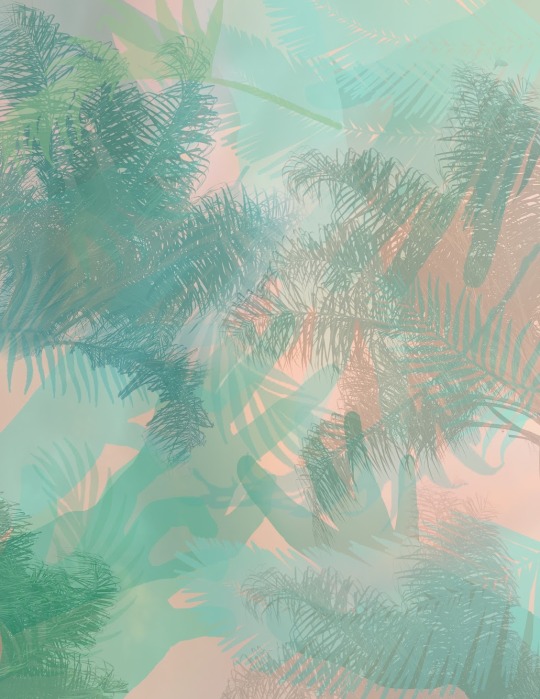
PALMS
presented by MATERIAL GIRLS
March 16 - April 7, 2019
opening reception March 16, 7-10pm
MATERIAL GIRLS is pleased to present Palms, the collective’s first show in LA featuring small sculptures by 15 artists. It is an established social contract that one is permitted to “look but not touch” art objects. Palms invites visitors to temporarily transgress this boundary- allowing them to touch, hold, and move the objects within the context of the exhibition. The works rest on a large curvilinear plywood platform that re-directs the automatic choreography of art viewership. Instead of left to right, front to back, viewers will be encouraged to slowly wind through space. With this direct tactile understanding of the work, and a constantly changing “curation” depending on interaction, visitors are entrusted with an art viewing experience that is both fluid and communal.
Each artist was asked to present an object holding boundaries and touch in mind. These considerations emerge from the MATERIAL GIRLS’ broader interest in tactility and bodily awareness of space as a feminist undertaking. In preparation for this exhibition, the participating artists contributed writings and images to a zine, Fronds, that is available to read and purchase at the exhibition.
Palms features the work of:
Yesenia Bello
Cameron Cameron
Cara Chan
Jisoo Chung
Devra Freelander
Hilliary Gabryel
Julieta Gil
Ling-lin Ku
Claire Lachow
Gracelee Lawrence
Amelia Lockwood
Ofelia Marquez
Nina Sarnelle
Rachael Starbuck
Amia Yokoyama
Rachel Youn
MATERIAL GIRLS is a feminist collective of sculptors and digital artists formed in 2016. Founded by Cameron Cameron, Devra Freelander, Hilliary Gabryel, Claire Lachow, Gracelee Lawrence and Rachael Starbuck, MATERIAL GIRLS organized to create a space for emerging, under-represented artists and thinkers in the patriarchal art world. They are committed to making and sharing work, fostering conversation, and supporting one another through their practice. While each member of MATERIAL GIRLS retains a vibrant and active independent studio practice, they come together to collaborate on site-specific installations and projects. MATERIAL GIRLS has co-authored immersive installations, organized exhibitions, and exhibited works at Random Access Gallery (Syracuse, NY); SPRING/BREAK Art Show (New York, NY); SVA Curatorial Practices (Brooklyn, NY); ALT ESC: No Vacancy 3 (Brooklyn, NY); Trestle Projects (Brooklyn, NY); the Church Troy (Troy, NY); the Museum of Human Achievement (Austin, TX); and Sadie Halie Projects (Minneapolis, MN.) materialgirls.work @material.grls
Biographies
Yesenia Bello is an artist and arts administrator living in Chicago, IL. She received her BFA from the School of the Art Institute of Chicago (2016). Her practice stems from lived experiences as a first generation Mexican-American, retracing sensations that arise from slowly losing her native tongue. Her work has been presented locally at places like 6018 North, The Overlook Place, DfbrL8r Gallery, and Chicago Artists Coalition, where she participated in HATCH Projects (2016-2017). Between 2011-2016 she was co-organizer of Walla Fest, a volunteer run gathering around the Philadelphia area. yeseniabello.com @yeseniabello
Cameron Cameron lives in Los Angeles. She received her BFA from the University of Texas at Austin in 2014, attended Virginia Commonwealth University Summer Studio Program in 2015 and received an MFA from UCLA in 2018. Cameron uses sculptural interventions to compensate for generic imagery, and questions how the mundane may represent the feeling of loss or longing around the disorder of the day-to-day. She has participated in Skowhegan School of Painting and Sculpture, Ox-Bow School of Art, Grin City Collective Residency, and the Art Students League of New York. cameron-cameron.com @winter_shorts
Cara Chan lives and works in Los Angeles, CA. Chan creates large-scale architectural and body-based sculpture often involving gestural interaction and exchange. She received her BFA from New York University (2009) and her MFA from University of California, Los Angeles (2017), and has been an artist in residence at Banff Center for the Arts, ACRE Projects, Vermont Studio Center, Ox-bow School of Art, Kane Kwei Carpentry Workshop, and Lighthouse. cara-chan.com @caraachan
Jisoo Chung is an LA-based multi-disciplinary artist working primarily through video, photo, enactment, and installation. Chung’s work pays attention to the failures that we encounter in our daily lives such as failure of communication and translation, failure of exhibiting, and currently more focusing on the failure of daily-based technology. Exhibitions and screenings include Los Angeles; 1748 adams, Socal MFA juried exhibition, Pomona, Seoul; Screening Project: Dongshi Sangyoung, Museum CICA, Gallery Aloq Episode. Chung received a BFA from Seoul National University, and is currently an MFA candidate at UCLA. chungjisoo.com @jigu.nee
Devra Freelander is an artist living and working in Brooklyn, NY. Her work explores geology and climate change from a millenial and ecofeminist perspective. Freelander received her MFA from Rhode Island School of Design and her BA from Oberlin College. She is a founding member of MATERIAL GIRLS, and has participated in the Women’s Studio Workshop Residency (2018), Arctic Circle Residency (2017), Socrates Sculpture Park Emerging Artist Fellowship (2017), Lower Manhattan Cultural Council Workspace Residency (2016-2017), and the Virginia Commonwealth University Summer Studio Program (2013). She is represented by CIRCA Gallery. devrafreelander.com @devrafreelander
Hilliary Gabryel lives and works in Queens, NY. Her work is aspirational, echoing the immediacy of the consumerist market and commenting on luxury and feminine expectations. She received her BFA from Virginia Commonwealth University. She is a founding member of MATERIAL GIRLS and co-founder of the interdisciplinary Ridgewood, Queens project space ERA VI VII VI (2014-2016). Her work has been shown in New York, NY; Austin, TX; Minnesota, MN; Richmond, VA. Residencies & awards include the Vermont Studio Center Fellowship, the Wassaic Project, ASMBLY Session #1, and VCU Summer Studio Program. hkgabryel.com @hilliarygabryel
Julieta Gil lives and works between Los Angeles and Mexico City. She holds an MFA in Media Arts from UCLA. Her creative research incorporates installation, sculpture, 3D animation and print to explore topics of simulation, and the overlappings that occur between the virtual and physical. She was a grant recipient of Mexico’s National Fund for Culture and the Arts (2015–2016) and co-founder of FEMMEBIT, an experimental video festival held in Los Angeles. She has exhibited in spaces such as Laboratorio de Arte Alameda, Anchorage Museum, Nevada Museum of Art, National Museum of Art (Mexico City), Future Gallery, Human Resources and Zuecca Projects. julietagil.com @julietagilg
Ling-lin Ku is a Taiwan born, U.S. based artist currently living and working in Austin, Texas. Her sculpture and installation work explores language, everyday life, play and fetish through diverse materials and digital fabrication. Ku was selected to participate in the International Studio and Curatorial Program and Vermont Studio Center, and her work has been exhibited throughout the US. She is currently an MFA candidate in the University of Texas at Austin’s Sculpture and Extended Media program, and an art columnist for KUROSHIO FOCUS online media. linglinku.com @linglin_ku
Claire Lachow is an artist & writer whose work exists between physical and digital environments, fixating on the cultural and political predicaments of commodification, desire, language, and identity. She is the recipient of a 2019 Red Bull Arts Detroit residency & fellowship. Selected exhibitions include the Governors Island Art Fair, Super Dutchess, SPRING/BREAK Art Show, Local Host Gallery, and Schema Projects. Lachow received a BA from Oberlin College and lives and works in Brooklyn, NY. clairelachow.com @clayore
Gracelee Lawrence recently returned from Thailand where she was a visiting artist at Chiang Mai University. She received her MFA in Sculpture + Extended Media at the University of Texas at Austin in 2016 and her BA in Sculpture from Guilford College in 2011. She is a co-founder of Pig and Pony Gallery and a contributing writer for the International Sculpture Center Blog. She has shown work internationally and was a 2016–17 Luce Scholars Fellow, a recipient of the 2015 UMLAUF Prize, the 2013 Eyes Got It Prize, and the 2011-12 Ella Fountain Pratt Emerging Artist Grant. graceleelawrence.com @gleeleelawlee
Amelia Lockwood is a visual artist whose use of ceramic processes privileges trace, error, mutation and collapse. Lockwood received her BFA from Syracuse University (2012), completed post-bac studies at University of Colorado, Boulder (2016), and is currently an MFA candidate at the University of California, Los Angeles. @amiamia
Ofelia Marquez is a first generation Mexican- American artist based in Los Angeles. She received her MFA in sculpture at UCLA and is currently an art restorer at Aleksei Tivetskys Art Restoration and Conservation studio. Ofelia Marquez has recently exhibited at: Human Resources, The Mistake Room, Anonymous Gallery, New Wight Gallery, the William Rolland Gallery of Fine Art, Avenue 50, and REDCAT. ofeart.wixsite.com @ofemarquez
Nina Sarnelle is an artist and musician with a BA from Oberlin College and MFA from Carnegie Mellon University. A founding member of the Institute for New Feeling and dadpranks, she’s recently shown work at Whitechapel Gallery, Hammer Museum, Getty Center, Ballroom Marfa, MoMA, Istanbul Modern, Neuer Berliner Kunstverein, NADA Miami, MAAT (Lisbon), Fundacion PROA (Buenos Aires), Black Cube (Denver), Southern Exposure (San Francisco), Recess (NY), Akademie Schloss Solitude, UNSW Galleries (Sydney), Project 88 (Mumbai), Villa Croce Contemporary (Genova), CCA Santa Fe, MWoods (Beijing), and MoCA Cleveland. ninasarnelle.com @ninasarnelle
Rachael Starbuck is currently living and working in Austin, TX. She received her MFA in Studio Art from the University of Texas at Austin in 2017 and her BFA in Sculpture + Extended Media from Virginia Commonwealth University in 2011. She is co-founder of curatorial collective Partial Shade. She has been a resident at ACRE Projects, The Contemporary Artists Center at Woodside, The Wassaic Project and The Vermont Studio Center and has shown work in Richmond, VA; Providence, RI; Chicago, IL; Austin, TX; Houston, TX; New York, NY; and London, UK. rachaelstarbuck.com @starbuckra
Amia Yokoyama grew up in Illinois, in a bi-lingual, bi-cultural, bi-racial, bi-religious household. This experience of the world carries her. Amia is a multi-media artist who works with experimental animation, video, 2D mixed media, and installation. Amia dropped out of University of British Columbia for her B.Sci in Sustainable Development, and received a BA from New York University in 2010, and an MFA in Experimental Animation from CalArts in 2017. She has received fellowships from Skowhegan School of Painting and Sculpture, Bemis Center for Contemporary Arts, Vermont Studio Center, Women in the Media, and United Plankton Charitable Trust. amiayokoyama.com @iamamia
Rachel Youn is an artist living and working in St. Louis, MO. They use sculpture and new media to poke fun at hierarchal narratives embedded in objects and lifestyles. Sourcing from home furnishing stores and oriental goods peddled on craigslist, their work collapses notions of authenticity and artifice through the lens of identity. They received their BFA from Washington University in St. Louis in 2017 and has exhibited at the Sheldon Art Galleries, Parapet Real Humans, the Millitzer Gallery, the Luminary and Flood Plain, the Bermuda Project, and Open House. They are a recipient of the Regional Arts Commission Artist Support Grant and the Vermont Studio Center Fellowship. rachelyoun.com @rachelyoun
1 note
·
View note
Text
Courses at University

Nottingham Trent University
Explore all aspects of what it means to be a professional photographer in the 21st Century on this degree course.
Learn practical skills including exposure and metering, digital workflow, colour and black and white printing, studio lighting, large and medium format, planning and installing exhibitions, professional photographic portfolio development and moving image.
You’ll work across the subject of photography choosing to focus on areas such as art, documentary, editorial, commercial, advertising and critical writing on photography, tailored to your own personal interests and career aspirations.
On this course you will....
NTU is leading arts provider and is ranked 8th in the UK for Art and Design (The Complete University Guide 2019).
This course produces graduates that are in high demand - 96% of our students are in employment or further study within six months of graduating (DLHE survey 2016/17).
Work with industry-standard facilities, learning skills in traditional photographic methods, digital media and emerging technologies.
Work broadly across the subject, including art, documentary, editorial, advertising and fashion photography, and critical writing.
Develop your professional skills through work experience placements, industry competitions, and collaborations with organisations.
Benefit from our guest lecturer series, with speakers from a range of photographic practices.
Opportunity to apply for an international exchange to one of our partner institutions around the world.
Take part in the development and organisation of a photography festival in your final year, showcasing your work at venues across Nottingham, with further opportunities to exhibit at other graduating events.
Alumni have gone on to roles such as creative director at Jamie Oliver and companies such as Getty Sports Images.
Entry Requirements
A-levels – BBC; or
BTEC Extended Diploma – DMM; or
112 UCAS Tariff points from three A-levels or equivalent qualifications; and
GCSEs – English and Maths or Science grade C / 4.
https://www.ntu.ac.uk/study-and-courses/courses/find-your-course/art-design/ug/2019-20/ba-hons-photography

Sheffield Hallam University
Acquire digital and traditional photographic analogue skills, digital capture and production and image management and manipulation, using industry standard equipment.
Develop core practical skills through creative professional practice and a critical engagement with image making.
Have the opportunity to study abroad — with Erasmus funding available for European placements.
Refine your ability to solve problems, manage complex projects, and communicate your ideas effectively.
Engage with a distinctive, independent approach to a wide range of photographic contexts with this professional and practice-based degree. You are encouraged to take risks in a highly creative environment, developing your understanding and knowledge of the medium to enable you to fulfil your potential in the constantly-evolving discipline of photography.
On this course you will learn..
You learn through a creative, practice-based approach to self-directed production which emulates the independent nature of professional practice within photography. This is underpinned through an exploration of historical and contemporary approaches and relevant theoretical issues in order to help situate your work in a critical context.
You learn through
specialist workshops
technical surgeries
large group lectures
smaller group seminars
group critiques and review sessions
individual tutorials
There are opportunities to study abroad at one of our partner universitieswith the possibility of funding through the Erasmus programme.
Entry Requirements.
UCAS points
112
This must include at least two A levels or equivalent BTEC National qualifications, including at least 32 points in a relevant* subject. For example:
BBC at A Level including a grade C in a relevant subject .
DMM in BTEC Extended Diplomain a relevant subject.
A combination of qualifications which must include a relevant subject and may include AS levels, EPQ and general studies.
You can find information on making sense of UCAS tariff points here and use the UCAS tariff calculator to work out your points.
GCSE
English Language at grade C or 4
Maths at grade C or 4
https://www.shu.ac.uk/courses/digital-media/ba-honours-photography/full-time/2019

Falmouth University
Work at a professional level, in a supportive and collaborative environment and explore the history and theory of photography, while being encouraged to experiment and innovate in your own work. You'll learn actively through workshop based teaching, with sessions in our open plan Learning Hub, around the campus and beyond.
On this course you will...
Have access to our state-of-the-art facilities, including studios and dark rooms, with access to a range of digital and analogue cameras.
Exhibit your work and enter competitions with support from our staff.
Do at least two-weeks of work experience in your second year, with options for local, national and international placements.
Have a number of opportunities for professional development in your third year including publishing magazines, curating events and organising exhibitions.
Be able to join MAYN, our in-house creative photography agency.
Entry Requirements
104 - 120 UCAS points, primarily from Level 3 qualifications like A-levels, a BTEC Extended Diploma or a Foundation Diploma.
We’ll also consider you based on your individual merit and potential. So get in touch if:
You’re predicted points below our requirements
You’re thinking about transferring from another institution
You have other qualifications or professional experience.
https://www.falmouth.ac.uk/study/undergraduate/photography
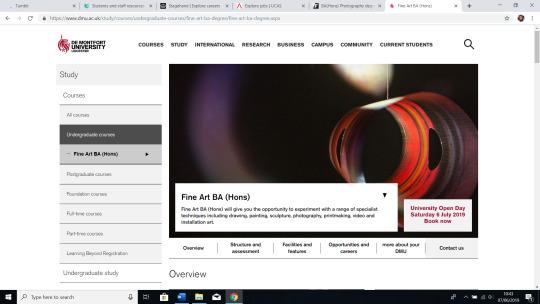
DE Montfort Universality
n the first year you will choose options in: painting, sculpture, printmaking, video and photography. In addition, you will study drawing and contextual and professional studies. The second year develops your individual studio practice in one or more of these areas. You have the opportunity to explore a range of approaches to fine art via projects, workshops and self-directed study. In the final year you negotiate and develop your individual creative practice, culminating in an exhibition, part of DMU’s Festival of Creativity.
On this course...
Individual studio space and well-equipped workshops cover the practical aspects of printmaking, sculpture, photography, video, digital media techniques and the skills associated with contemporary approaches to painting. This is supported by skilled technical staff and a wide range of academic staff. An art materials shop is conveniently located on campus where you can buy a wide variety of art materials to help you with your studies.
Entry Requirements.
A good portfolio and normally:
Art and Design Foundation or
112 points from at least 2 A ‘levels and including grade C in Art and Design or
BTEC Extended Diploma DMM in an Art and Design related subject or
International Baccalaureate: 26+ Points including Art and Design
GCSEs - Five GCSEs grades A* - C (9-4) including English Language or Literature at grade C/4 or above.
Access - Pass Access with 30 Level 3 credits at Merit in Art and Design and GCSE English (Language or Literature) at grade C/4 or above.
We also accept the BTEC First Diploma plus two GCSEs including English at grade C/4 or above (if required as part of our standard requirement).
https://www.dmu.ac.uk/study/courses/undergraduate-courses/fine-art-ba-degree/fine-art-ba-degree.aspx

Loughborough University
It uses both practical and theoretical classes to develop your unique and individual artistic abilities, and fosters your creative skills by developing your critical and analytical insight.
The Fine Arts degree emphasises the relationship between practice and theory, enabling cognitive skills to be intrinsic to studio based practice, where exceptional facilities and expertise supports a range of fine art practices, ranging from drawing, painting, sculpture, ceramics, moving image, photography, to temporal performance.
On this course...
Our BA Fine Arts degree aims to provide a supportive and intellectually stimulating environment through which to facilitate your acquisition of advanced practical and critical skills in contemporary fine art practice.
This is achieved by embedding the development of core practical skills – ranging across traditional and new media, 2D and 3D forms, analogue and digital processes – within an innovative and conceptually challenging curriculum.
This is supported by a core art history and visual culture lecture series, which facilitates an understanding of diverse contexts for art production and consumption (within the studio and beyond) and fosters a critical engagement with art’s historical, theoretical, cultural, political, social and ethical dimensions.
Entry Requirements.
A-Level -A typical offer for applicants without a Foundation course is ABB from 3 A-Levels.
(International Baccalaureate) IB- 34 (6,5,5 HL)
BTEC -Applicants with a UAL Level 3 Diploma in Art and Design – Foundation Studies, BTEC Foundation Diploma / BTEC National Extended Diploma (or similar) will be considered.
https://www.lboro.ac.uk/study/undergraduate/courses/a-z/fine-art/#modules_year_1
0 notes
Link
Artists: Roberto Cabrera Padilla, Lorenzo González Morales, Quique Lee, Naufus Ramírez Figueroa, Alberto Rodríguez Collía, Isabel Ruiz, Moisés Barrios, Jessica Lagunas, Roni Mocán, Jorge de León, Andrea Mármol Juárez, Feliciano Pop, Efraín Recinos, Gabriel Rodríguez, Mario Santizo, Studio Lake-Verea, Ramón Ávila, Darío Escobar, Alfred Jensen, Dennis Leder, Daniel Schafer, Diana de Solares, Vivian Suter, Enrique Anleu Díaz, Chiachio & Giannone, Daniel Hernández-Salazar, Zipacná de León, Carlos Motta, Paula Nicho, Diego Sagastume, Hellen Ascoli, Moisés Barrios, Alfredo Ceibal, Manuel Chavajay, Oscar Farfán, Yasmin Hage, Regina José Galindo, Regina José Galindo, Diego Morales Portillo, Juan Sisay, Julio Zadik, Andrea Aragón, Margarita Azurdia, Alfredo Ceibal, Benvenuto Chavajay, Darío Escobar, Luis González Palma, Carlos Mérida, Eny Roland Hernández, Francisco Tún, Dagoberto Vásquez, Marilyn Boror, Daniel Chauche, Jorge Chavarría, Renato Osoy, Alejandro Paz, Ángel Poyón & Juan Fernando Poyón, Pablo Swezey, Rodolfo Abularach, Francisco Auyón, Edgar Calel, Erwin Guillermo, Rodolfo Mishaan, Manuel Antonio Pichillá, Aníbal López, Luis Díaz Aldana, Jessica Kairé, Byron Mármol, Alejandro Marré, Marco Augusto Quiroa, Elmar Rojas Azurdia
Venues: Museum of Contemporary Art Santa Barbara, Community Arts Workshop, and Westmont Ridley-Tree Museum; Santa Barbara
Exhibition Title: Guatemala from 33,000 km: Contemporary Art, 1960 – Present
Date: September 17 – December 17, 2017
Note: A publication associated with the exhibition is available for download here.
Click here to view slideshow
Full gallery of images, press release and link available after the jump.
Images:
Images courtesy of Museum of Contemporary Art, Santa Barbara. Photos by Juan Brenner.
Press Release:
Organized by Miki Garcia, Executive Director & Chief Curator of Museum of Contemporary Art Santa Barbara (MCASB), as well as Guest Curator, Emiliano Valdés, Guatemala from 33,000 km: Contemporary Art, 1960-Present brings together works that have rarely been seen beyond Guatemala, but that speak to a range of formal, political, and social concerns that permeate contemporary art both in Latin America and throughout the globe. This exhibition marks the first ever in-depth commitment to the study of Guatemalan art in the late 20th and early 21st century, bringing innovative and visually arresting works produced by Guatemalan artists to a public audience in the United States and abroad.
With the support of the Getty’s Fall 2017 initiative, Pacific Standard Time: LA/LA, Guatemala from 33,000 km features artwork in a range of media, tracing the tumultuous route that has traversed the history of Guatemala since 1960. Pursuing the development of art in Guatemala is fundamental not only to understanding today’s production but also in the unveiling of practices and oeuvres that have largely remained underexposed. Political, infrastructural, and economic issues have acted as barriers to the study of art in Guatemala, preventing widespread knowledge of the innovative, perceptive, and aesthetically intriguing artworks that this exhibition compiles.
The exhibition includes over 70 artworks, occupying approx. 8,000 square feet which in Santa Barbara will be installed in 3 venues: MCASB, Westmont Ridley-Tree Museum of Art at Westmont College, and Santa Barbara Community Arts Workshop. It is structured around clusters or groups of works that represent central ideas, themes, and media that have been pivotal in Guatemala’s art over the last 50+ years. Spanning different moments and generations, both the works and the clusters are interconnected and often an artist that is included in one chapter could also be part of another so that the exhibition is not installed by clusters, but orchestrated in a way that highlights the multiple connections that exist between the works and the threads. The exhibition will generate a breadth of concerns that illuminate patterns of development in Guatemalan modern and contemporary art for the past 50 years. The clusters are mainly thematic, although a chapter is dedicated to works that through formal and technical experimentation have contributed to the advancement of artists’ production in the country. The exhibition understands Guatemalan modern and contemporary art as made up–seamlessly–of works that range from a strict Western art-historical narrative to local notions of art (so called naïf or otherwise) as well as artists that stand on the meeting point of these traditions.
The clusters are:
From various points of view, formal approaches, and ideological positions, ART AND POLITICS deals with the way in which artists from different generations have examined the thirty-six-year civil war and its consequences. Through these works emerges the nature of the conflict, as well as the polarization that it has generated in the Guatemalan population, which is reflected in artistic production. Given that the dates of this exhibition coincide with the formal beginning of the war and parallel the development of the artist as a critical observer of political circumstances, it is argued that contemporary Guatemalan art cannot be dissociated from this aspect.From various points of view, formal approaches, and ideological positions, ART AND POLITICS deals with the way in which artists from different generations have examined the thirty-six-year civil war and its consequences. Through these works emerges the nature of the conflict, as well as the polarization that it has generated in the Guatemalan population, which is reflected in artistic production. Given that the dates of this exhibition coincide with the formal beginning of the war and parallel the development of the artist as a critical observer of political circumstances, it is argued that contemporary Guatemalan art cannot be dissociated from this aspect.
The group under the heading ART HISTORIES acknowledges the existence of multiple art historical narratives and includes works that, in the spirit of Institutional Critique, refer to local or international art, to the history of art, or to the work of other artists as prime matter for creation. This chapter also includes artworks by artists concerned with the lack of access to art education in the country, interested in publications, and inspired by artistic and cultural producers not necessarily recognized within the official art history.
The works included in FORMAL EXPERIMENTATION have contributed to the renewal of technical and formal artistic practice in Guatemala over the last half-century, touching on fields such as geometric abstraction and the use of industrial materials in sculpture as well as the influence of handicrafts on artistic languages. The group recognizes how, despite a strong tendency towards figuration and social art, geometric abstraction has been, from different angles, a determining component of the history of Guatemalan art, insofar as it has allowed for its renewal.
GENDER PERSPECTIVES analyzes how gender and body rights have been expressed in artistic practices in recent years, largely through dialogue with foreign artists and the adaptation of the development of feminist theories to Guatemalan reality. It also discusses the dissident practices that have emerged from what has been more of an empirical conception of gender theory or activism and its social and cultural manifestations.
LAND, LANDSCAPE, AND TERRITORY explores the complex relationship between landscape, land, and territory, from some of the essential issues behind the armed conflict (such as former President Jacobo Árbenz Guzmán’s agrarian reform proposal, and the expropriation of land to the United Fruit Company) to the central role played by the landscape in the construction of the collective imagination and the country-branding of Guatemala. The artworks in this cluster explore the multiple narratives that emerge from the landscape, such as the country’s natural environment, landscape as a source of conflict, and a particular cultural vision of the indigenous population: one that understands indigenous as an element of an exotic landscape and not as a citizen, member of society, and human being in his/her own right.
POPULAR CULTURES brings together works and artists who, from a Western art historical perspective, have paid special attention to popular culture, both indigenous and Ladino. With one of the most deeply rooted traditions in Latin America, textile handicrafts have influenced several generations of artists, directly and as a result of their formal characteristics, use of materials, and wide dissemination as a distinctive cultural seal.
In RACISMS AND IDENTITIES, the artworks address the idea of a possible Guatemalan identity from the perspective of the cultural clash between indigenous groups and the Ladino population (a minority that has historically had social, political, and economic power). This set includes a series of works that deal with the racial division between Guatemalans (ideological and de facto) and racial conflicts in the course of history, as well as the multidirectional racism that follows suit. It also explores a third way of understanding the question of indigenous and Ladino cultures—through the lens of hybridization and postcolonial theories.
Given the profound influence of Maya cosmology, as well as the great diffusion of “imported” religions in Guatemala, such as Catholicism and more recently, Protestantism, the category RELIGION, SPIRITUALITY, AND METAPHYSICS includes works that deepen the presentation of a spiritual aspect and its relationship with a wider cultural scene. This cluster includes a thoughtful and critical review of the effect that different modes of faith and metaphysics have had on the country in permeating the culture and its material and visual production.
The set of artworks in VIOLENCE AND TRAUMA present the responses of artists to the violence that persists in Guatemala as a consequence of the civil war and as the continuation of a broader historical narrative that goes back to the Spanish Conquest, spanning the military governments of the twentieth century, and deriving from the situation of inequality and social instability today. This group of works addresses the role of the State and the socially instigated violence that has impacted life in Guatemala during the last half century, but also represents work that is produced by a lack of State, institutionality, and social policies that have allowed such tragic phenomena to happen in the country, such as the maras (gangs), migration, and the strengthening of drug trafficking.
Links: “Guatemala from 33,000 km” at Museum of Contemporary Art, Community Arts Workshop, and Westmont Ridley-Tree Museum
Contemporary Art Daily is produced by Contemporary Art Group, a not-for-profit organization. We rely on our audience to help fund the publication of exhibitions that show up in this RSS feed. Please consider supporting us by making a donation today.
from Contemporary Art Daily http://ift.tt/2kBWpsg
0 notes
Text
Get Rid of Your Portfolio Today and Replace it With This
Have you noticed that it’s just not enough anymore to show good work?
Not because every designer’s work is good–indeed it isn’t. Or even that the standard for good work has gotten higher. Indeed, it hasn’t. The problem is that most clients can’t tell the difference between your good work and your competitor’s mediocre work. Most clients don’t have the experience, the design sensibility, or sometimes even the time, to look closely enough to distinguish excellent work from meh.
That means no matter how amazing your work is, your traditional portfolio, whether online or off, will not be able to communicate the breadth of what you have to offer your ideal client or why you are the right one for their project. Why?
image from Getty – CSA Images
A traditional portfolio tells nothing about your process. This level of transparency is becoming increasingly important. Clients want to understand how you think and how you solve problems. Execution is important, but showing how you got there is the difference between a one-hit wonder and a creative genius with real staying power.
A traditional portfolio doesn’t speak to the experience of working with you. Are you a diva or are you collaborative? How do you address challenges and opportunities? Do you have special obstacles to overcome? Was the client happy? Did they get the results they expected (or more)? Your portfolio is mum on all of the above.
A traditional portfolio doesn’t specify what role you played in the process. Nor does it express to what extent. It’s one thing to create a new visual identity and brand platform for a client, for example, but it’s an entirely different thing to extend an existing identity and brand to new applications in print or digital media. How will they know the difference if all they see is the logo?
A traditional portfolio won’t distinguish you from other creatives. Unless your work is significantly and markedly different (at a glance and evident from a thumbnail!) from what other creatives are producing, or is very highly specialized, a traditional portfolio won’t be enough to single you out in a crowd.
So you have to differentiate yourself some other way. And the best way to set yourself apart these days you have to show your process. But how?
I suggest showing your process, letting the client get a peek at how you think, how you approach their design challenge and how you begin to come up with the best solution. And what better way to do that than with a strategically crafted case study?
A well-written case study wins over the traditional portfolio on all counts.
Yes, a case study takes more work to pull together; but its value can be multiplied many times over when repurposed and recycled into your own content marketing to engage new prospects.
Plus, it will make it easier for you to sell your services without becoming that pushy salesperson you dread. Read more about that here.
Now, start working on a case study of your very best project—the one that you want more like.
PowerPoint. The very mention of it is enough to send many designers screaming from the room.
But in this workshop, PowerPoint expert Laura Foley presents compelling reasons to change your mind about the world’s most popular presentation design software. Find out how you can use PowerPoint to better serve your clients, increase your marketability & create effective self-promotion.
Enroll today! Course runs Dec. 26, 2017 – Jan. 2, 2018
The post Get Rid of Your Portfolio Today and Replace it With This appeared first on HOW Design.
Get Rid of Your Portfolio Today and Replace it With This syndicated post
0 notes
Photo
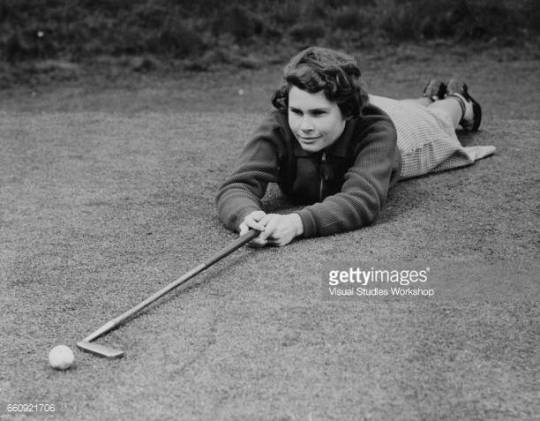
05-01 View of fifteen-year-old golfer Fiena Merris as she lies on the green, Middlesex, England, 1920s or 1930s. (Photo by Soibelman Syndicate/Visual Studies Workshop/Getty Images) #merris http://dlvr.it/P21vs3
0 notes
Photo

04-01 Portrait of an unidentified man and woman as they stare at one another over cups of tea, 1920s or 1930s. (Photo by Soibelman Syndicate/Visual Studies Workshop/Getty Images) #starehamry http://dlvr.it/Nms64F
0 notes
Photo

03-31 Stevedores load crates of oranges from a harbor dock, Valencia, Spain, 1920s or 1930s. (Photo by Soibelman Syndicate/Visual Studies Workshop/Getty Images) #alboraiavalencia http://dlvr.it/Nmf5T7
0 notes
Photo

03-31 Portrait of an unidentified man and woman as they stare at one another over cups of tea, 1920s or 1930s. (Photo by Soibelman Syndicate/Visual Studies Workshop/Getty Images) #starejuchy http://dlvr.it/NmPW1h
0 notes
Photo
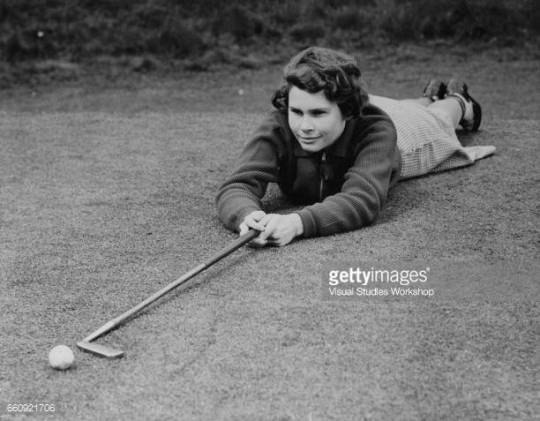
04-29 View of fifteen-year-old golfer Fiena Merris as she lies on the green, Middlesex, England, 1920s or 1930s. (Photo by Soibelman Syndicate/Visual Studies Workshop/Getty Images) #merris http://dlvr.it/P1ZqfT
0 notes
Photo
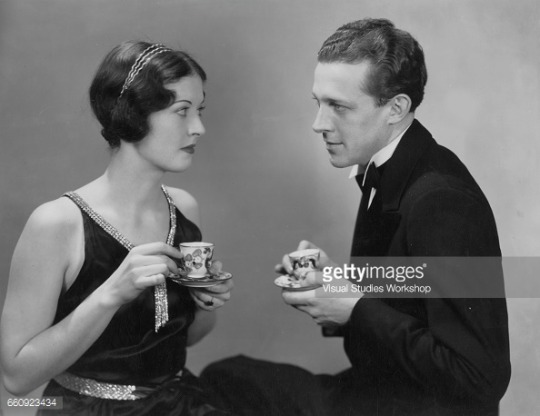
03-30 Portrait of an unidentified man and woman as they stare at one another over cups of tea, 1920s or 1930s. (Photo by Soibelman Syndicate/Visual Studies Workshop/Getty Images) #starejablonki http://dlvr.it/NmFyk7
0 notes